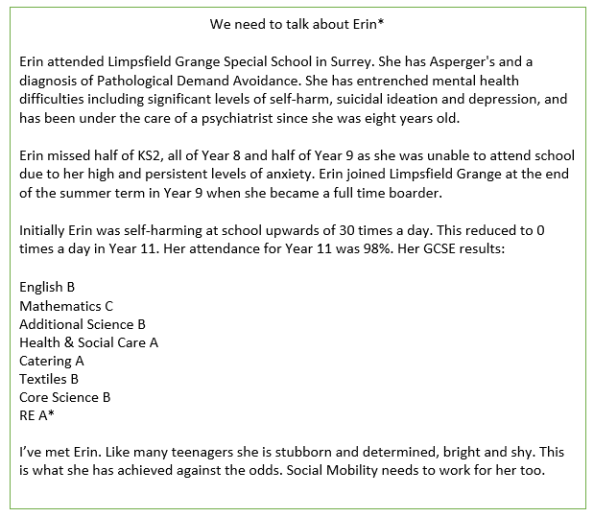With the removal of National Curriculum Levels and the impending demise of P Scales many Special Schools are feeling worried about what they are going to replace them with. For some, the anxiety is even greater because these assessment materials have formed the basis of their whole curriculum. This is the unintended consequence of any assessment; teaching to the test. Assessment criteria can also act as a crutch, so when a teacher thinks, “I don’t know what to do next for this student” they refer to the criteria for the next stage and so become intellectually disengaged with what learning looks like for that student. Whilst the P scales may offer some guidance, they do not and were not intended to show the nuanced progress that a child can make, either vertically or more often laterally and were certainly not formed to be used as the backbone of any curriculum framework.
But that does not answer the question, “What is a school to do?” As with all complex decisions and processes there is no one solution and in a recent conference held jointly by Swiss Cottage School, Camden and Frank Wise School, Banbury, it was clear that many Special Schools are indeed being brave enough to create their own, confident in the knowledge that theirs is the right curriculum for their students. No child is the same as another and so by extrapolation, no school of students will be the same, so it is up to the headteacher, senior leaders, teachers and teaching assistants in collaboration with parents to create a curriculum that promotes the aims and aspirations they have for those children and young adults. Once you have the “Why?” you can begin to formulate the “What?” and the “How?”
So all schools must begin with their vision and this should not just be some polished beautifully sounding epithet. It must be what is truly aspired for in relation to their whole community. What does the school believe? Is it all about individuality and functionality or is this interwoven with being part of many communities and having exposure to a breadth of experience? No answer is right or indeed wrong, but it has to be believed and supported by all stakeholders including the students themselves.
Once the vision is secure, the process of identifying what this will look like in practice can begin. Will the curriculum be broad and balanced or will it be tightly focussed on those skills that are needed for life beyond school; be that college, work or independent living? Will students be given the opportunity to find and develop interests and passions? Will the curriculum be internally driven and outward facing? Will the learning provide students for the lives they can lead in the future whilst also being expansive and aspirational? Will time be given to enable students to be fully immersed in the world that is presented to them through school?
From the broad categories of “What?” comes the intellectual demands of working out ‘How?’ this learning can be delivered. Schemes of work are not called for as this provides another ‘off-the-peg’ model for teachers which assume they cannot work out what their students need and hampers their innate creativity. Guidance documents however, prove very effective and if these are created in working parties in which teachers have an intellectual investment in the process, their understanding of underpinning skills for each area is rigorous.
The curriculum framework and guidance documents must also give thought to the thread that connects learning from a child’s first exposure to school through to post 16, post 19 and beyond. How can we make transition points smooth and ease students through the tangled web of getting older whilst developing cognitively at their own pace?
And beyond the curriculum, schools must consider the learning that happens throughout the day at other points. How do we notice and promote those? How can we capture the interactions between students at lunch times for example? Are the spontaneous decisions students make to solve a problem such as feeling thirsty recorded too?
So, in summary, here are some key questions a school should consider when embarking on this process:
- What is the vision for our students? How does this relate to our aims and objectives?
- Within the already segregated environment of a special school (segregated from their mainstream peers), do we want to be truly inclusive?
- How can we encourage inclusion in the local community?
- Are we making decisions in the best interests of the students or in the best interests of the staff? For example, is mixed ability just too hard?
- Are we challenging our formally held beliefs? Do they stand a rigorous critique?
- The process of preparing for adulthood does not begin in post 16 provision. Are we planning for it early enough?
- Have we asked our students what their aspirations for the future are?
- Is what we offer fun and engaging?
And once you have created the ‘perfect’ curriculum for your students, one that is like opening a box of wonder for each student, remember that is just the beginning. It should be ever-evolving; dynamic rather than static and robust rather than rigid. Any curriculum, if grown in this way also bears well under the scrutiny and sway of national policy change; external guidance act as a mirror by which to reflect upon what a school has. It should not rock the foundations but make them all the more secure. Questioning and challenge serve to make stronger the beliefs we all hold.
Lara Hughes is a Deputy Headteacher at Frank Wise School
